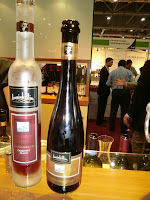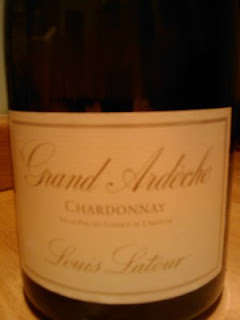.jpg)
Ice wine has been something that I’ve wanted to taste for a long time and at the LIWF this year I got my opportunity visiting the Constellation stand to try some Inniskillin wines. Germany has always been the traditional home of ice wine, but Canada has started to catch them up, producing some fantastic wines this year.
Inniskillin produces its wines from one of four grapes, Riesling, Vidal, Tempranillo or Cabernet Franc, producing some fantastically wonderful and complex wines. You’ve probably heard of most of these grapes, with the exception of Vidal; that’s because it’s a hybrid. This means that two other grapes are crossed together, in this case Uni Blanc and Seibel, to create a new variety.
In order to produce Ice wine they wait till mid January to harvest and the temperature has dropped below 8°C for a constant period. Due to the lateness of the harvest and the freezing process the grapes yield a much more concentrated juice, around 10 – 15% of what you would get for a standard table wine.
At the LIWF they had bought four of their wines with them, all from the Niagra region. There was a Riesling, two from the Vidal grape, a still and a sparkling, and a red one produced from Cabernet Franc. Whilst they were wonderful, the two that really caught my eye were the sparkling Vidal and the Cabernet Franc.
To produce the sparkling Vidal the primary fermentation takes place in a sealed vessel trapping the naturally occurring carbonation in the wine. This is unlike other Sparklings where it occurs from a secondary fermentation. The wine had aromas of stone fruit, such as Nectarines and Apricots, while the natural carbonation and the rich creamy texture is all balanced by the acidity on the palate, an absolutely outstanding wine.
As for the Cabernet Franc, the process is the same, with the exception that fermentation does not take place in a sealed vessel, resulting in a still wine. Brilliantly red in colour, with wonderful fruit aromas of berries, while on the palate again it had a rich creamy texture with flavours of strawberries and cream. Yet another wonderful wine..
It was definitely well worth the wait to sample these wines and I would highly recommend them to anyone looking for something fantastic to go with your desert!






